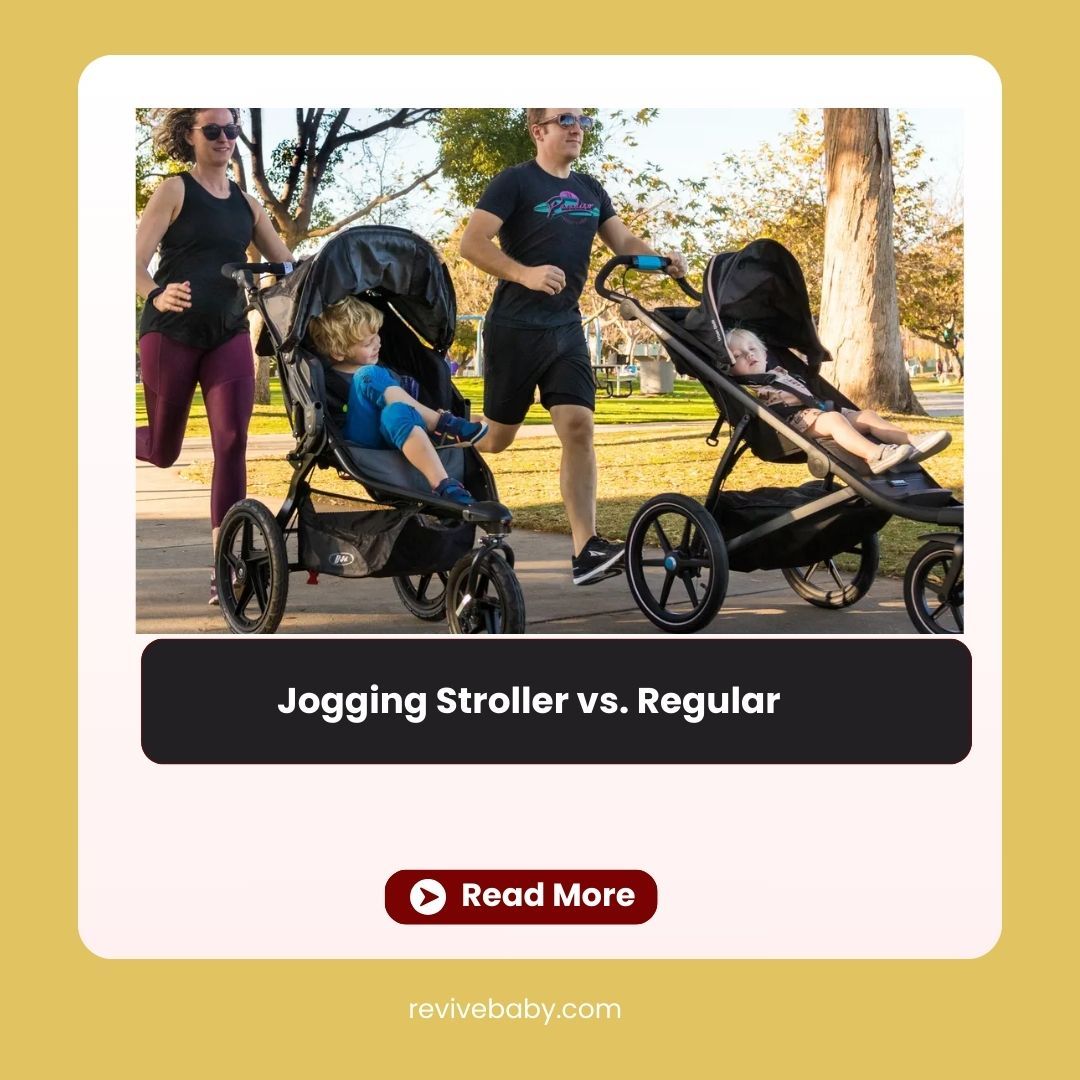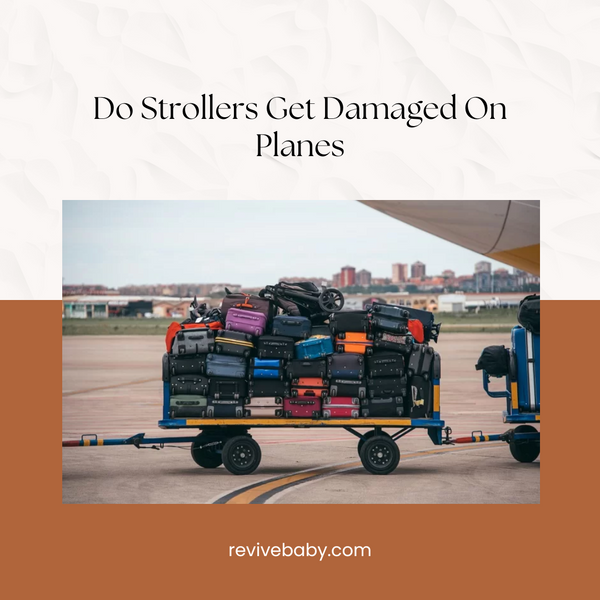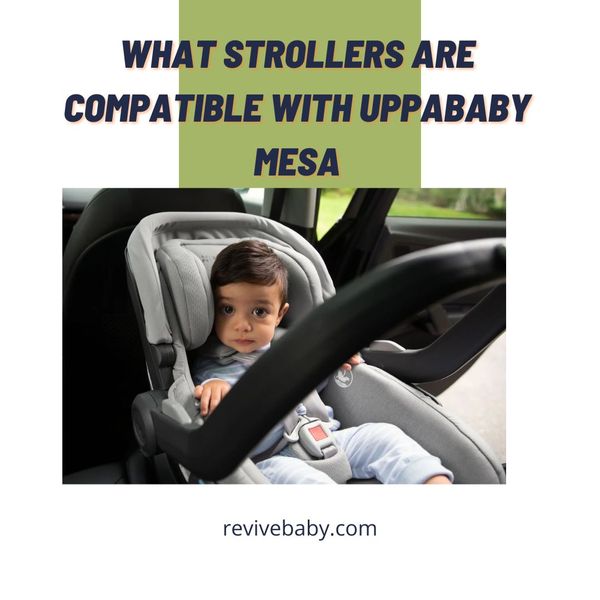On the other hand, regular strollers provide everyday convenience and versatility for activities like shopping and leisurely walks.
This guide will explore the key differences and features of jogging and regular strollers to help you make an informed decision tailored to your family's needs. We'll look into portability, safety, convenience, and budget considerations, providing you with the essential information to choose your lifestyle.
By the end of this comparison, you'll clearly understand the unique benefits each type of stroller offers, enabling you to select the one that aligns perfectly with your parenting style, fitness goals, and daily routines.

Jogging Stroller vs. Regular Stroller - Physical Characteristics
Jogging Stroller Features

Jogging strollers are specifically designed to cater to the needs of active parents who want to maintain an exercise routine while spending quality time with their children. These strollers have various features that make them well-suited for jogging and other outdoor activities.
Here, we'll explain these features in detail:
Three-Wheel Design: Most jogging strollers feature a three-wheel design, with one wheel in the front and two in the back. This configuration offers improved portability, especially when making tight turns or navigating challenging terrain. The single front wheel can swivel for easier steering during daily activities and can be locked in place for added stability while jogging.
Large, Air-Filled Tires: Jogging strollers typically have larger, air-filled tires than regular strollers. These tires provide a smoother ride for your child and better shock absorption when running over uneven surfaces or rough terrain. The air-filled tires offer superior traction and help absorb the impact of bumps, ensuring a comfortable experience for your little one.
Suspension System: Many jogging strollers feature a built-in suspension system, enhancing the ride's comfort. The suspension helps minimize jolts and vibrations, providing a smoother journey for your child. This is especially important when jogging on gravel paths or uneven roads.
Safety Wrist Strap: Jogging strollers often include A safety wrist strap. This strap attaches to the handlebar and is worn around your wrist while jogging. If you lose control of the stroller, the strap prevents it from rolling away, ensuring your child's safety.
Handbrake: Jogging strollers typically come equipped with a handbrake, which allows you to easily slow down or bring the stroller to a stop during your run. This feature gives you better control, especially when navigating downhill slopes or when you need to make sudden stops.
Reclining Seat: Many jogging strollers feature a seat to keep your child comfortable during long runs. This allows your child to rest in a more comfortable position, and some models even recline fully, providing a suitable spot for napping on the go.
Sun Canopy: A sun canopy protects your child from harsh sunlight during outdoor activities. Many jogging strollers have large, adjustable canopies that provide ample shade and protection.
Storage Space: While more spacious than regular strollers, jogging strollers often include storage compartments for essentials like diapers, bottles, snacks, and personal items. These storage areas are typically located beneath the seat or within reach of the handlebar.
Regular Stroller Features

Regular strollers, also known as standard or traditional strollers, are designed to provide everyday convenience for parents while ensuring the comfort and safety of their children. These strollers are versatile and well-suited for activities beyond jogging or running. Below, we'll explain in detail the features that are commonly found in regular strollers:
Four-Wheel Design: Regular strollers typically have a four-wheel design with two wheels at the front and two at the back. This configuration offers excellent stability and maneuverability on flat surfaces like sidewalks, shopping malls, and indoor spaces.
Compact and Lightweight: Unlike jogging strollers, regular strollers are often more compact and lightweight, making them easy to maneuver through tight spaces, doorways, and crowded areas. This feature is especially useful for urban settings.
Convenience Features:
- Storage Space: Regular strollers often come equipped with ample storage options. This includes under-seat storage baskets for carrying essentials like diapers, baby gear, and groceries.
- Cup Holders and Trays: Some models feature parent and child trays with cup holders, which provide a convenient spot for snacks, beverages, and small items.
- Pockets and Compartments: Additional pockets and compartments on the stroller store personal items, such as keys, phones, and wallets.
Adjustable Canopy: Regular strollers typically feature a sun canopy that protects from sunlight and inclement weather. Many canopies are adjustable and offer extended coverage to shield your child from harmful UV rays.
Reclining Seats: To accommodate naptime while you're on the go, many regular strollers have seats that can be reclined to various positions. Some models even offer a nearly flat recline, suitable for newborns.
Harness System: Regular strollers generally feature a three- or five-point harness system to secure your child in the seat safely. This ensures that your child remains securely fastened during the ride.
Brake System: Most regular strollers come with a foot-activated brake system. This allows you to lock the stroller when making stops or taking breaks.
Versatility: Regular strollers are highly versatile and can be used for various activities, from everyday outings like shopping and visiting the park to leisurely walks and trips to the zoo. They suit various terrains but perform best on smooth, flat surfaces.
Travel System Compatibility: Many regular strollers are compatible with infant car seats, creating a travel system that allows you to seamlessly transfer your child from the car to the stroller without disturbing their sleep.
Folding Mechanism: Regular strollers often have a one-hand fold mechanism for easy storage and transportation. This feature is particularly useful when you need to collapse the stroller quickly when traveling or storing it in your vehicle.
Pros And Cons of Jogging Stroller vs. Regular
Conclusion
Choosing between a jogging stroller and a regular stroller involves understanding their distinct features and purposes. Jogging strollers excel in outdoor adventures, while regular strollers provide versatility for everyday activities. It's essential to align your choice with your family's unique needs and lifestyle to ensure both your child's safety and your convenience. Making an informed decision guarantees enjoyable outings and peace of mind.








